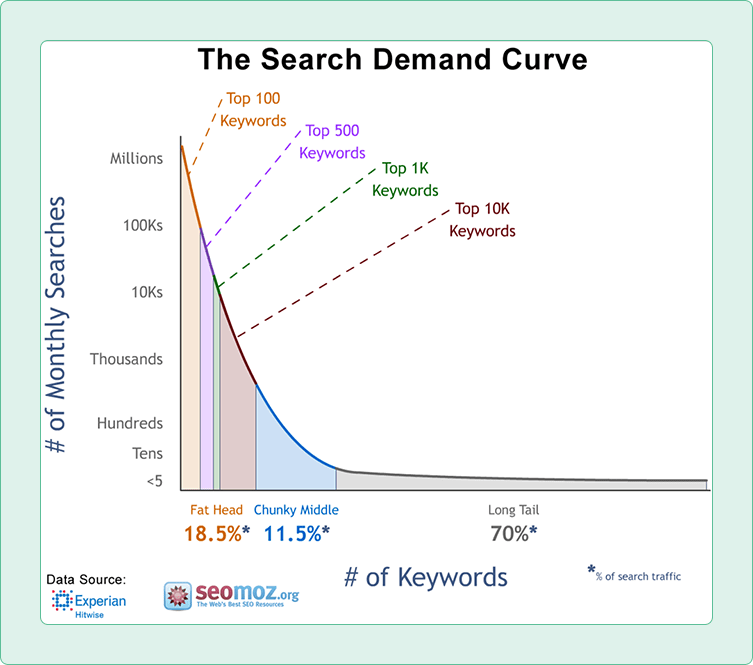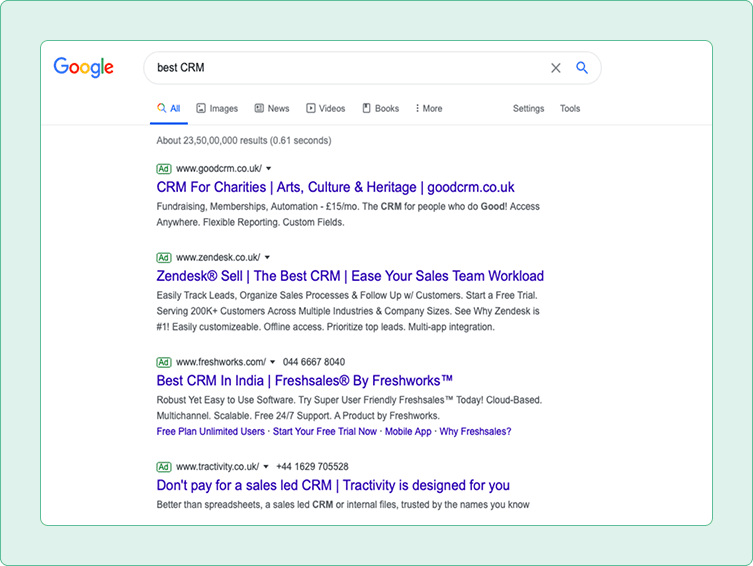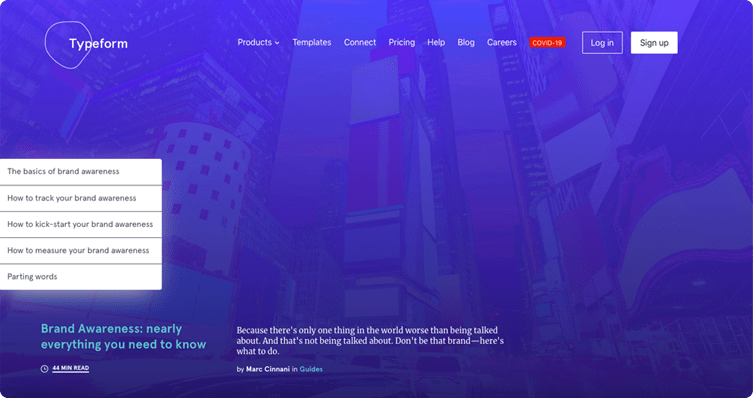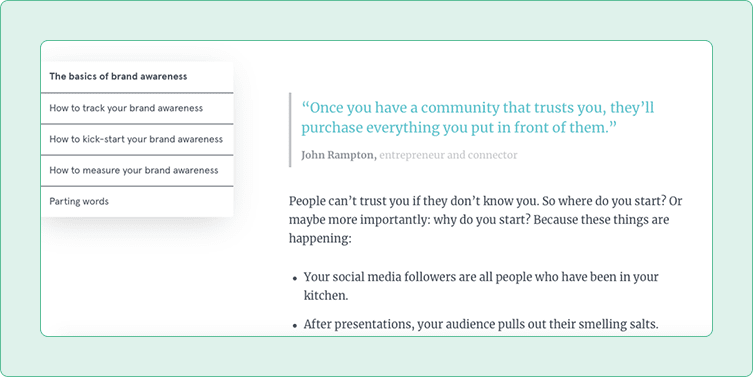Don’t be surprised when we tell you that 63,000 searches are conducted on Google every second? Or that 3/4th of internet users don’t scroll beyond the first page of search results. This is scary but true! In fact, it shows that no company website can afford to rank on the second, third, or fourth page. But what about new businesses who have little online presence? Is there no hope for them? Of course, there is. Below are eight ways to rank #1 on Google with quality content writing:
1. Use long-tail keywords
It is almost impossible for a business to show up on the first page of Google for short-form keywords. That is because such keywords (e.g. WordPress themes) almost always have a high search volume, resulting in little to zero conversions. Quite interestingly, it is long-tail keywords that constitute 70% of all web searches. The truth is as keywords get longer, search volume becomes lower, resulting in lesser competition and increased conversion rates.
2. Provide an efficient customer service
Messenger chatbots can answer customer queries 24×7, which is not possible for any human team, however efficient. By installing a Facebook Messenger chatbot to handle frequently asked questions, you can make things much easier for your customer support team and also give your customers the satisfaction of instant responses.
Bots can be customised to handle a variety of queries, from general information and product details to complaint resolutions and return/refund requests. The use of a chatbot also leaves the support team free to handle more pressing customer queries where human intervention is required.

Long-tail keywords are highly specific and show strong intent. For example, the keyword “WordPress themes for startups 2020” clearly states what the consumer is searching for on the search engine.
Therefore, the more you amp up your excellent content writing with long-tail keywords, the likelier you are to show up on first-page rankings (even if there are large, influential companies you are competing against) and get actual conversions from people who click on your link.
3. Invest in Google Ads
This might seem surprising, but it makes a lot of sense. The first three or four results for every Google search query are always Google ads. See below example:

However, what is crucial to note is that the results of Google Ads and the keyword intent don’t always match up. For instance, in the above example, if the consumer searches for ‘best CRM’, the Google Ad results will all be from major CRM companies each promoting their product as the ‘best’.
On the other hand, people who search for ‘best CRM’ are more likely to be looking for comparisons of different CRMs so that they can make an informed choice. So there is considerable scope for you to promote your comparison-type post by listing it on Google Ads for your target audience and potentially getting featured in the first three or four results.
Again, going back to the first point, it would help if you use long-tail keywords with enough search volume in your PPC campaigns. That way, you will have a better chance of reaching your target audience directly with quality content writing.
4. Write blog posts frequently
Regardless of how many long-tail keywords you target, the golden rule of SEO remains the same – creating high-quality content and a lot of it. According to HubSpot, publish as much great content as possible to maximise organic traffic.
Maintain a healthy mix of 3-4 short blogs and 4-5 long blogs a week. And don’t just rehash the same points that everyone is talking about. Instead, introduce new ideas and share critical insights that you have acquired in your years of experience.
It is equally essential to be regular about your blog posting. Decide on a schedule that works for you (at least start with one blog post a week and scale up gradually), and build up a repository of quality content writing that you can share.
5. Write long-form content
It is straightforward – the longer your content, the more the number of keywords it will contain, and the likelier it is that it will rank high search results. A SerpIQ study
charted the top 10 results in search queries by content-length:

The thing is Google understands that users these days are not merely seeking for tidbits of information. They want everything they need in one place, and you can make this happen with your quality content writing.
Long-form content has the flexibility to be comprehensive on a given topic, increasing the likelihood of answering all the questions of users under a single roof, without compelling them to conduct their mini-research every time the information presented in the content piece falls short.
But while writing 500-700-word blog posts stuffed with short keywords is a norm, many businesses are still not taking the time to craft 2000-word thought-leadership pieces or detailed case studies types of content.
Furthermore, the long-form type of content contains more backlinks, as per HubSpot. Here is a depiction of the correlation between content length and backlinks:

Therefore invest the time to craft detailed and top notch content that include images, infographics, examples and step-by-step guides wherever relevant. The efforts you put in quality content writing will eventually bear results.
6. Refresh your most popular content
If you are having trouble coming up with new blog post ideas, consider expanding written content pieces that are already doing well. For instance, you could revisit something you wrote in 2017 and bulk it up with new industry statistics and examples acquired over the last three years.
Or you could create new mini-case studies based on your latest customer testimonials and interviews and share those. Side by side, be sure to update your service pages periodically, refreshing the keywords and making minor amends in the web content.
If Google detects that your page has not been updated in a while, it might assume that your content is outdated and lower your ranking. Keep writing content and making updates as often as you can, even if it is just to share a new blog post or feature a new limited-period discount.
Remove irrelevant information, and introduce new insights and keywords. In today’s world, there is almost always something new to write about or comment on every day no matter what your industry is, so this should not be too difficult.
7. Get featured in round-ups and reviews
If you don’t have enough time and/or money to leverage quality content writing to craft lengthy content pieces or invest in PPC ads, getting featured in product round-ups by authority sites is a great marketing strategy that makes quicker and easier way to get traffic.
The authors of those sites review each of the products or websites featured on the list and include a link to them. It is like free advertising for your brand – the more round-ups you get featured in, the more traffic you get from those round-up posts.
After all, the goal is to rank #1 on Google with quality content writing, and it could be from one someone else’s efforts as well. Therefore, spend some time reaching out to websites that do round-ups and ask to be included. This is one of the most efficient content strategies and you will get traffic for months and even years to come – with minimal effort invested.
Check out Virayo Marketing’s article in which our co-founder Kaz Driver shared her opinion on why businesses need to be fair and honest with what they are offering in a free trial.
7. Write specific, catchy headlines
A catchy headline is what gets your potential customers to click on your link. Writing a good headline is not just about including keywords (and you should not include too many of those either). You need to grab your readers’ attention with a hook that is specific, innovative and cleverly written.
Steer clear of the generic (like “Five Reasons You Should Post On Social Media”) and narrow your focus to what readers want to read (like “New Study Shows Why You Need To Post More On Social Media”).
You could also include an eye-grabbing statistic in your headline (like “Here’s Why 70% Of Marketers Are More Active On Social Media”). Quality content writing requires a bit of research, and such microcopies should always be in sync with who you are as a business.
8. Build power pages
Power pages go far beyond regular blog posts. They are extensive content pieces – often over 10,000 words in length – that offer in-depth information and valuable insights that not only customers but also industry leaders will find useful.
Length is necessary for a power page – the longer your content piece is, the more keywords you will rank for. What’s more, power pages are designed to showcase your expertise so that influencers will backlink to your page.
The more links and shares you get, the greater your readership and the higher your SEO ranking will go.
Typeform, for instance, has a power page designed to inform its visitors, with a tagline: “Nearly everything you need to know.” The webpage is easy-to-navigate, and its table of contents appears immediately, which means visitors don’t have to scroll down manually.

The entire website includes CTAs to tweet various stand-out sentences. What’s more, there are several links on the page, but the majority of them don’t even link to Typeform. The focus of the quality content writing here is to be informative and less salesy.

So when you are writing a power page, structure it in the form of an ‘ultimate guide’ or an extensive list that is packed full of information and tips.
Ranking high on Google is impossible if you are not going to be consistent with your quality content writing. Therefore, keep experimenting with long-tail keywords and producing great content regularly. Get featured in external articles and even go via the paid route to ensure your business website receives the traction it deserves.


